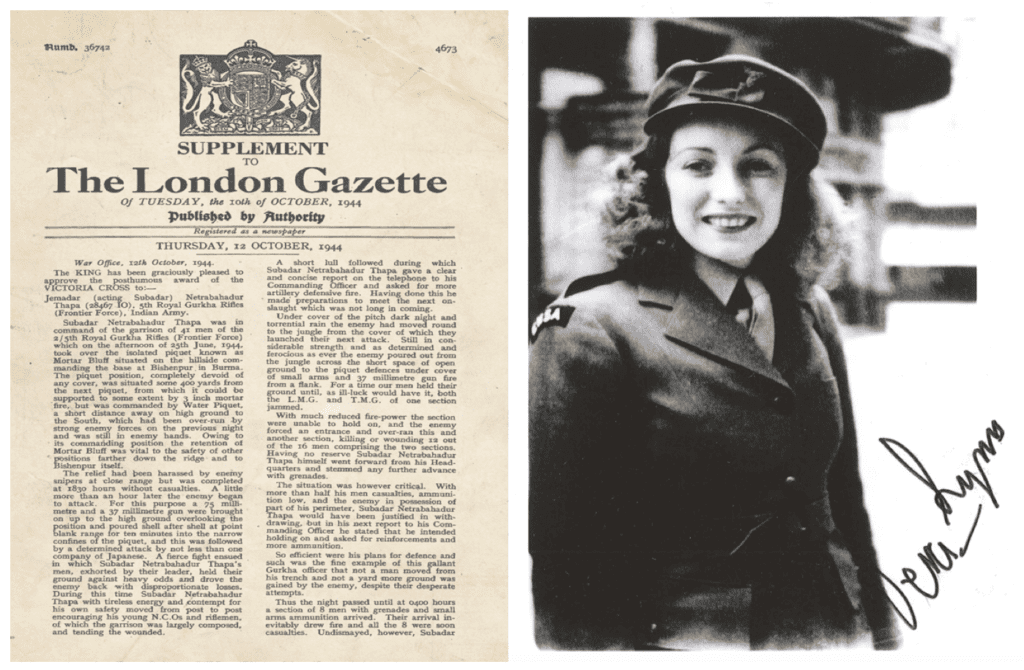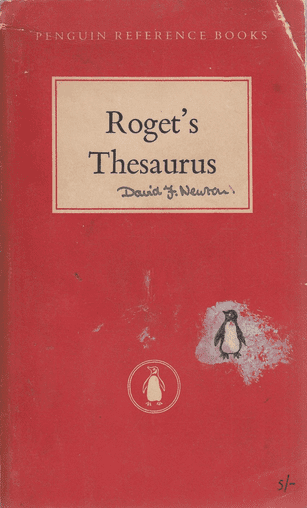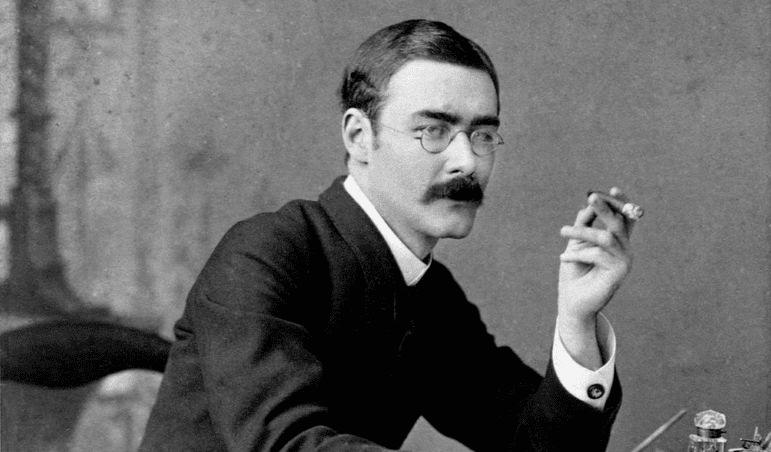The A to Z of writing fundraising appeals (part 2)
It's time for part two of the fundraising copy writing guide from Bluefrogger, Steve Lynch. As before, remember that this is a little tongue in cheek but packed full of great advice. Part one is here if you missed the previous post. Today, we are taking you from G to L. And we start with grammar (where else?).
G is for Grammar

This is a question from the Key Stage 2 2018 SATS grammar test. For 9-10 year olds.
Insert a subordinating conjunction to show that we ate lunch and listened to music at the same time
We listened to the music__________we ate lunch
I have never heard of a ‘subordinating conjunction’, but my heart bleeds for the children who are being forced to learn English like it’s a computer algorithm rather than a living, breathing language that allows us to express ourselves and understand each other. And the reason they do it this way: because former Education Secretary Michael Gove and his oily lackeys learned Latin like this in their public schools and it ‘never did us any harm’. Or they might just enjoy making children suffer. Way to go if you want to kill a love of books and language before they have even had a chance to develop.
Ranting aside, if you sit down to write copy thinking about subordinating conjunctions, pronouns agreeing with antecedents, or split infinitives, you will get nowhere fast. Write a letter or email. Read it back to yourself. Does it flow naturally without any stopping and starting and sound like real conversation? If so congratulations, you are a grammar champion.
H is for Headlines
When I was a student I used to stand outside tube stations trying to flog the Socialist Worker. Getting people to actually buy the thing was nigh on impossible.
In fact, in a two-hour shift I’d be lucky to ever sell more than two or three copies, which is about one copy for every 10 ‘get back to Russia’ heckles I’d receive.
But then, one glorious weekend in the early 1990’s, everything changed. Not only did my ‘comrades’ and I sell out of papers in about 15 minutes, we got hundreds more delivered and they went too.
So what had happened? The paper’s content was much the same as any other week – fight this, down with that, etc. – but, crucially, the headline on the paper’s front page was a stroke of genius.

For anybody who wasn’t around at the time, it was based on this.

For many of us who grew up under Margaret Thatcher, this infamous Sun headline represented all we thought callous and inhuman about the woman. It had crudely celebrated the death of 100’s of Argentinian conscript sailors whose warship the General Belgrano had been sunk while sailing in international waters during the Falklands conflict. Thatcher admitted the ship had been sunk illegally, but refused to apologise or even blink when confronted with what had happened. That event, and headline, became synonymous with what we saw as the evils of Thatcherism.
So when Socialist Worker used that same word to celebrate the PMs resignation, it struck a chord. A big one. People who in normal circumstances would have sooner sold their children into slavery than buy a Socialist Worker, were queuing up to get a copy. The headline was relevant, spoke to people about their own lives and perfectly captured the feelings of the millions of people who were overjoyed to see her go.
In fundraising, writing the perfect headline probably won’t improve your ROI as dramatically as it did the Socialist Worker’s, but it’s still critical. Without wishing to state the obvious, people read the headline first, and if it can inspire them, divert them or speak powerfully to them about their own lives, they’re far more likely to engage with your proposition.
Just look at this…

and this

And there’s something else the fundraising headlines above have in common with Socialist Worker’s. Simplicity. The strongest headlines aren’t weighed down with qualifications, with ‘ifs’, ‘buts’, ‘maybes’, ‘coulds’ or ‘woulds’. They’re direct, get straight to the point and inspire people to take action.
H is also for Heresy
Like any industry, fundraising is governed by a set of orthodoxies. Letters, we are told, must always have the ask on the first page, there always has to be a P.S. and we should avoid the word ‘we’ at all costs etc etc. Stuff like that.
I would never advise a fundraising copywriter to ignore these orthodoxies. They haven’t been plucked out of thin air, but rather are the result of decades of experimentation and testing. Using techniques that have been proved effective will nearly always get better results than starting from scratch. But, sometimes, it can pay to commit heresy and try something different.
If your donor appeals are getting diminishing returns, why not go without a headline and get straight into the letter? What if the envelope didn’t have any writing on it? What about leaving the ask till the end?
Orthodoxies only became orthodoxies because somebody, at some point, tried doing something differently. A good copywriter will learn all the basics and understand the techniques that work, but then they should always ask themselves ‘can I find a better way of doing this’?
I for Interesting
Not every word of a fundraising pack has to be about the proposition. Sometimes, its good to include stuff purely because donors will find it interesting.
These are a few years old, but but look at some of the inclusions Bluefrog has inserted in packs for the Gurkha Welfare Trust.

The first is a citation detailing why a Gurkha soldier was awarded the Victoria Cross, in 1944. The second is a postcard and message from Dame Vera Lynn, also written in the 1940s, expressing her admiration for the Gurkhas. Neither of these pieces had much to do with the ask (a legacy and a gift to fund Gurkha’s pensions), but we included them because we know that the charity’s donors are fascinated by the history and heritage of the Gurkha regiments and would find the inclusions interesting, in and of themselves.
Entertained and engaged donors are far more likely to respond to your appeal, so giving them information they are interested in, even if its only tangentially related to the ask, can yield great results.
I is also for Interviewing
I’ve interviewed a lot of charity beneficiaries over they years. It can be a bit scary, but its never half as scary for me as it is for the interviewee who I will be asking to open up to me, a stranger, about some of the most personal things imaginable. A good starting point if you’re going to interview a case study is to remember it’s supposed to be a conversation, not an interrogation. So think of yourself less as Jeremy Paxman, more as Louis Theroux.

Here’s a link to a video showing Louis at work:
Louis is great at getting his subjects to relax and open up, but how does he do it? Here’s what an academic wrote:
“Theroux’s questioning is typically quite submissive. It’s not forceful. It’s not telling people when to answer. They’re allowed to come in whenever they want.
By using ambiguous intonations, his subjects are driven to lead the conversation and convey more information. Intentionally or not, it very cleverly makes Louis’ subjects feel in charge when answering his questions.
He bases his questions on people’s previous answers. This tells his subjects that he is listening and allows them to feel that they are in control.”
So how can you be more Louis? Well, you could try the following:
- Start with general open questions, for instance about the weather or people’s health, or ask a question about something you have seen on your journey to meet them. Chat. It will encourage the interviewee to talk about something they know and feel comfortable discussing.
- Establish eye contact when you ask questions.
- If you’re taking notes be sure to look up and re-establish eye contact whenever you can. Your subject needs to know you are listening to them.
- Consider jotting down areas you want to cover off, rather than specific written questions. If you read out long lists of pre-prepared questions rather than reacting to what your subject is saying, it can be off-putting for them and appear as if you’re not listening.
- Smile and nod. Show empathy and sympathy.
I is also for Intro
Please don’t ever start a fundraising letter by introducing the signatory. You know the sort of thing:
My name is Charlie Charity and as Head of Donor Engagement I’m writing to you today to tell you about myself because I have no idea how to engage with you as a donor.
It will never capture anybody’s imagination or interest and will always be a missed opportunity.
Besides, the first thing most people look at when they get a letter is the signature, to find out who it is from. So you’d be repeating yourself as well as boring your reader. There has to be something more interesting to tell people than your job title. Something like this maybe, from a recent Marie Curie letter:
Dear Friend,
I know we’ve never met, and that you might think it’s a little strange that I’m writing to you about something very personal to me: the death of my beautiful wife, Caroline. She was only 33. But when I tell you our story I hope you will understand why I felt I had to write.
By the way, I reckon this is the best opening line to a book ever, from Dickens’ A Christmas Carol...
Marley was dead, to begin with.
J is for Jargon
Everybody knows that donor focused communications shouldn’t include meaningless, impenetrable jargon, but that doesn’t mean we shouldn’t have a good laugh at some of the worst examples. These are all genuine, from actual fundraising materials.
We aim to aggregate evidence and bring stakeholders together for reflections on progress
With your help we can facilitate their implementation
We need to move from incremental progress to accelerated change
Notice that all the jargoneers talk about ‘we’. I don’t think that’s a coincidence.
Sometimes it can be hard to think of alternatives to jargon, so that’s when you should turn to the copywriter’s best friend, a Thesaurus. It’s not cheating, it’s being smart.

K is for Kipling

‘What do they know of England, who only England know.’
Rudyard Kipling, 1891.
To paraphrase Kipling, a question fundraising copywriters should ask themselves might be:
‘What do they know of fundraising, who only fundraising know?’
Kipling was famously a supporter of the Empire and was making the point that to understand England and how it was perceived, you had to have a wider perspective that reached beyond its borders.
When writing fundraising copy, it’s critical to understand the issue you are writing about from beyond the perspective of your charity. It’s in the nature of organisations to curate the information they supply you with to show them in the best possible light, but that isn’t necessarily going to help you understand the issues you need to write about. So if, for instance, you’re writing for a development charity, make sure that the charity’s literature isn’t the only thing you read about the country you’re discussing.
With the help of Google, cast your research net as wide as possible. If you find an interesting article, follow the links to find out what formed that writer’s opinion. If you’re writing for a health or disability charity, read what people’s real issues are on discussion boards. If you’re writing for a homelessness charity, speak to a homeless person (actually, you could do that anyway, they don’t bite)!
L is for Length
I’ve been told many times that in fundraising copy the sentences have to be short. Crap. If sentences read well and are properly punctuated, their length is irrelevant.
I’m going to prove that by composing a sentence that, despite its tradition-breaking, taboo-shattering, convention-challenging length and number of clauses, will render you mesmerised, enthralled, nay almost dumbstruck at its audacity, cheek and perhaps, might I even daresay, charm – a sentence of a type that, perhaps for good reason, might never make it into a fundraising letter, but a sentence nonetheless that makes a mockery of the ‘rule’ that sentences should routinely be short, flat and boring.
See. Shorter sentences can help convey urgency and a sense of drama. But longer sentences can impart a sense of pace and momentum and, when appropriate, you shouldn’t be afraid of them. Mix it up. Don’t be hidebound by made-up ‘rules’.
You can read Part 3 here where Steve shares the delights of mums, Orwell, repetition and another 11 letters of great ideas.
Tags In
Related Posts
6 Comments
Comments are closed.
The Essentials

Crack the Code to Regular Giving: Insights, Strategies, and a Special Giveaway!

‘Tis Halloween. Keep to the light and beware the Four Fundraisers of the Apocalypse!

Why do people give? The Donor Participation Project with Louis Diez.

A guide to fundraising on the back of a postcard

What does the latest research tell us about the state of fundraising?






[…] NOT MISS Mark Phillips The A to Z of Writing Fundraising Appeals. Find the entire series here, and here, and […]
[…] great fundraising copy. If you’ve missed the earlier posts, you can find part one here and part two here. We kick off today with […]
mksorb.com
[…]we came across a cool web site that you simply may possibly delight in. Take a search if you want[…]
OnHax Me
[…]below youll locate the link to some sites that we believe you’ll want to visit[…]
OnHax
[…]Every once inside a whilst we choose blogs that we read. Listed below are the newest web sites that we decide on […]
Masum
[…]Every after inside a while we pick out blogs that we study. Listed below would be the most recent web pages that we pick out […]